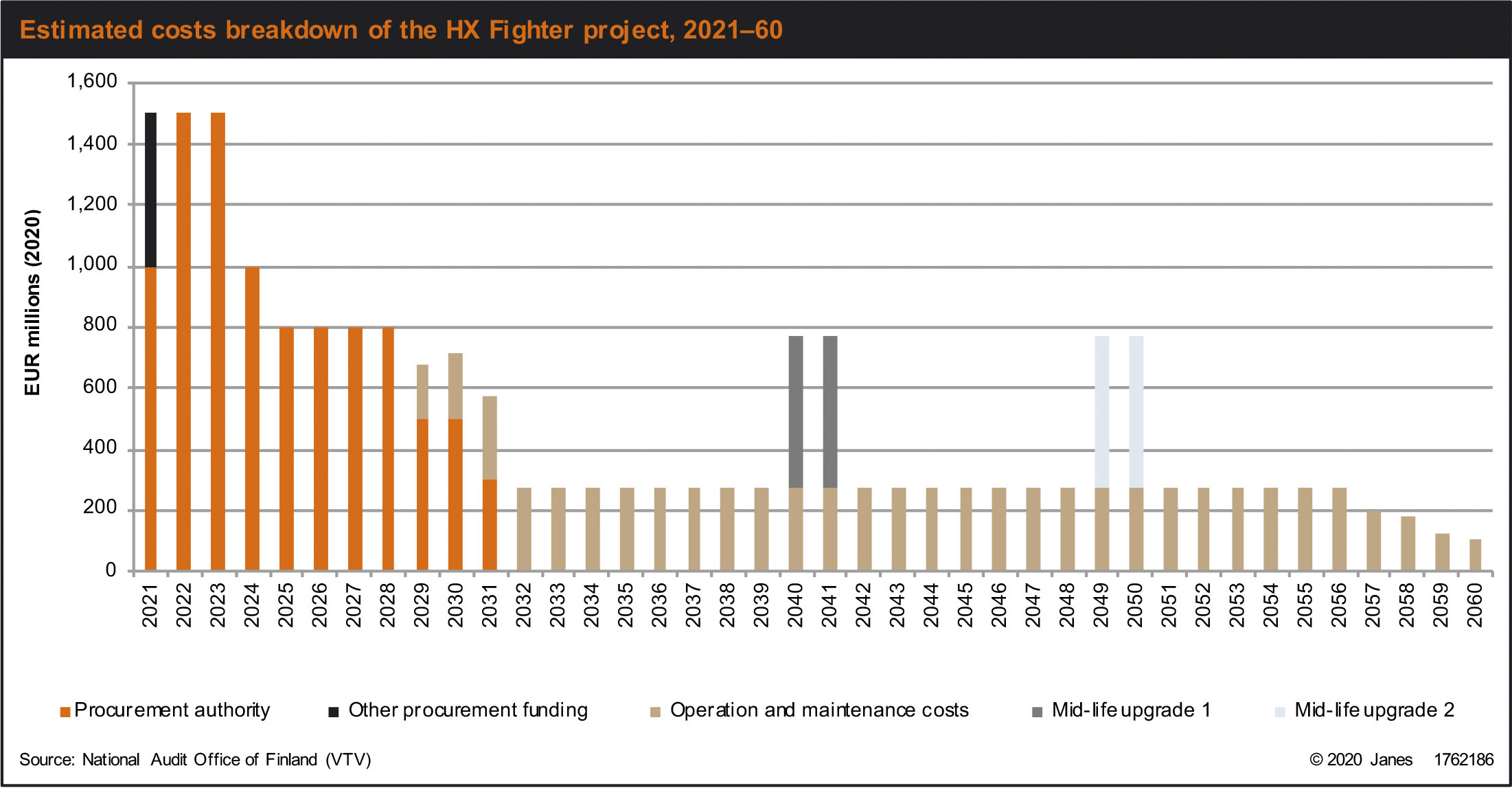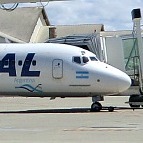YIMBY wrote:All a.net is waste of time. Or are you saying that you waste time when you fail to sell an F-35?
Well done, back to the base level of argument.
YIMBY wrote:Comparable scenarios is the best way to make fair comparison here, given that we have no access to the experiments. What else to do here? Insult each others?
You haven’t presented any comparable scenarios and in previous discussions when we have tried this you don’t understand modern air combat to be able to appreciate the differences. In that context, why should I continue if your knowledge and understanding is lacking?
YIMBY wrote:I was just asking a question. Is that wrong?
Source your question with supporting facts and then we can decide on the answer. I already asked you to provide this info but you again haven’t. A simple example would include fuel load for the respective jets, payload of the respective jet, the SFC of the engines to get an approximate fuel burn per hour at various rates of use, whether mil power or afterburner as being in either will make a significant difference. How long on station will the jet need to be once it arrives? Does the jet need to reserve fuel to fly home after getting there or can it simply fly as fast as it wants to that location and not worry about returning to base, do you include tanker support that Finland for example doesn’t have.
Do you get the idea, making stupid claims without any supporting facts is a waste of time. You are making the claim, why don’t you try and do a bit of research to support your claim?
YIMBY wrote:It is not size, it is movement.
YIMBY, the point is you have created a scenario in your head why a fighter sized target has the ability to get away while a 747 sized target does not without bothering to explain that to any of us. What is the point of discussing this with you if we don’t know what you are thinking?
YIMBY wrote:As I am not a spy I cannot give you exact photocopies of Russian blueprints. And I wouldn't even if I were.
So you are confirming you have no evidence for your claim. That is fine and expected. Please support your claims with evidence if you want us to believe what you are saying.
YIMBY wrote:Good old GCI can guide the missile launcher to visual or infrared distance.
Alternatively, its helps you to escape, if that is your goal.
So how does that disadvantage the stealth asset compared to the non stealth asset? If you read the source document I provided in the stealth thread you would see that even against low frequency radars the stealth features of the F-35 significantly lower the range of detection compared to a non stealth aircraft. So straight away you have a stealth aircraft with the advantage of a lower detection range from ground based radars, making it much harder to GCI a missile launcher to the area. Then when you add in the EW on the stealth aircraft it becomes even easier to hide the stealth aircraft in the noise. Good luck finding a pilot willing to fly into combat and be directed to the general area that Ground Control thinks has a stealth fighter aircraft in it, I suspect he may develop a sinus infection rather rapidly…
By the way, what stops the stealth aircraft from detecting the missile launcher as it approaches? The F-35 for example has all round defensive systems that detect the approach of an aircraft, it flies in a combat spread 70nm apart from its wingman, sharing all its sensor data between the two or four aircraft in its flight. It uses an LPI radar that makes detection by the approaching missile launcher nearly impossible. The point being the F-35 is able to dictate the terms of the engagement and therefore position itself, or its wingman, to take advantage of the tactical situation. It can launch A2A missiles (AIM-120 is a very effective HOBS missile) at a target everywhere it can see a target, irrespective if that target if behind or below.
If the stealth aircraft is trying to escape, then having a lower RCS will again reduce detection range and, with its EW systems, allow it to again hide in the noise better than a non stealth aircraft.
YIMBY wrote:Ozair wrote:What does low speed have to do with anything…?
A lot.
High speed lets you arrive faster to the mission.
High speed lets you escape faster after the mission.
High speed gives more range to your missiles
High speed reduces the no escape zone.
Do you claim that these are unimportant?
No, but they are irrelevant to the discussion. You have claimed that low speed is a limitation, where have you or I defined low speed as a limitation for any of the platforms other than your comment?
YIMBY wrote:You are the one selling.
Well done, no ability to support your claims so back to the base argument again.
YIMBY wrote:Ozair wrote:
YIMBY, range is not just about flying in a straight line somewhere and coming back. The longer the range of the aircraft translates to more time in the battlespace compared to the time it has to spend flying back and forth to its base to refuel.
For example if we compare the time on station of fighters in the HX competition flying a CAP 200nm from a Finnish base. This is almost certainly a mission type that Finland is interested in, as would Sweden or Spain and Taiwan or any Air Force with a mission to defend their airspace.
Almost certainly the fighters will the larger fuel load, which generally signifies a longer range, would be able to spend longer on station than fighters will a smaller fuel load. How much that is would depend on the specific aircraft, their fuel load, their fuel burn rate, their aerodynamic drag, their weight etc. Finland will have asked each of the HX vendors to provide some stats on probably a couple of specific profiles of their aircraft at 150nm and 200nm and maybe 250nm from a Finnish base and state how long will they last on station before they have to return to base to refuel.
If you are in combat you probably run out of ammo before fuel.
Well again you have now crafted a scenario that defines some type of combat against CAP implying use of all combat missiles before running out of fuel. What happens if combat only happens once per day but the CAP needs to be maintained 24/7? How many additional aircraft are required to support the CAP for the platforms that have lower fuel loads and therefore cannot maintain the CAP time for as long? How about when you aren’t in combat, the far more likely scenario?
But what we learn from above is that you again don’t understand fighter combat. I defined a very standard fighter mission profile that validated why a fighter jet with a longer range is advantageous, especially for countries like Sweden and Finland who do not have their own tanker aircraft, and all you say is the pilot will run out of missiles before he runs out of fuel?
YIMBY wrote:You know the purpose of external fuel tank is
1) to use it only when extended range is required, instead of ammo e.g.
YIMBY the Rafale, Eurofighter, Gripen, SH, F-16, F-15 etc will all fly almost always with external fuel tanks. The only time they don’t is typically during training. Every single fighter pilot wants more fuel.
YIMBY wrote:2) to drop it in combat, to have better performance
I agree that standard practice is to drop external fuel tanks when entering a tactical situation that requires it. The USAF practice is to drop external tanks when they are required to maneouvre against either a Surface to Air threat or an Air threat. That also applies to dropping A2G munitions as well depending on the threat. Almost always fighter aircraft use the fuel in the external tanks first. External drop tanks are not free although are reasonably cheap but are not insignificant to manufacture as the tanks have internal structure (or even an IRST in the case of the SH) and pumps to move the fuel. Hence dropping the tanks in peace time never occurs unless it is an emergency or accident (as what happened a couple of years ago when a US F-16 dropped an external tank into a Japanese lake…).
To delve into the scenario world for a moment, the dropping of external tanks is okay as long as you have enough. In a protracted air campaign it is conceivable that an Air Force could run out of external tanks and not be able to either manufacture them or transfer them to forward locations quick enough to replenish tanks dropped in combat. it would be interesting to know for instance how many external tanks Sweden or Finland or Australia actually have.
YIMBY wrote:Can F-35 carry full weapon load with a full tank without sacrifying field performance?
The F-35 can take off with full fuel, 18,000lb internal, and full 18,000lb weapons load (both internal and external) no problem. It's gross weight is 49,000lbs which includes a full fuel load, its max take off weight is 70,000lbs which translates to 20,000lbs of ordnance. (specs from F-35 wiki page).
YIMBY wrote:Ozair wrote:For reference the internal fuel loads are the following, (values all from Wiki)
F-35 – 18,000 lbs
SH – 14,700 lbs
Rafale – 10300 lbs
Eurofighter – 11000 lbs
Gripen E – 7500 lbs
The four candidates that have lower internal fuel loads all require external fuel tanks to reach their longest ranges.
And when are they required?
When is what required?
If you are referring to for example running a QRA, your scenario where the aircraft have to get there really quick really fast, then surprise surprise even the Eurofighter carries externals tanks for QRA missions, evidenced by the RAF Eurofighter sitting in a QRA hanger with external tanks on the wings ready to go
https://www.alamy.com/stock-photo-raf-e ... 08643.htmlYIMBY wrote:
Thanks for posting the Girpen E fuel figure I already posted, 7500lbs is 3400kg…

Good to see you provided a source reference, pity it doesn’t answer the question. Has the Gripen E increased its thrust to weight ratio over the C? You do know that along with an increase in internal fuel the Gripen E increased in weight. That weight increase means that a Gripen E cannot take off with a max fuel load and a max A2G load. It sacrifices either fuel or ordnance depending on the profile it has to fly. Finland doesn’t have any tanker aircraft so I expect that ordnance will often by the first thing to go, remember fighter pilots always want more fuel.
YIMBY wrote:Ozair wrote:YIMBY wrote:Where on earth do they need to strike? Madrid, Manchester or Warsaw? London, Rome, Budapest and Berlin would be reachable by Gripen.
Again YIMBY your lack of understanding of how fighters fly and fight is demonstrated by your inability to comprehend the situation. Fighters use more fuel when they have to fly supersonic to intercept an airborne target and in this instance the Gripen ran out of fuel while trying to intercept the airborne target and had to return to base. Don’t shoot me about this mate, it wasn’t me who designed the scenario, it was the Swiss Air Force.
An now a scenario is good thing? OK, let it be.
YIMBY, it wasn’t my scenario, it was a scenario actually tested by the Swiss Air Force during their evaluation. Don’t you think that deserves some merit given they had the actual aircraft there flying the profile that they determined was worthwhile testing?
YIMBY wrote:If talking about supersonic flying, are you sure that F-35 has the longest range at very high supersonic speeds?
No I’m not but then I never claimed it did. Depending on the profile flown it is certainly in with a good chance given it can fly with a max fuel load and sufficient weapons with no external drag which none of the other aircraft can.
YIMBY wrote:Ozair wrote:As for how the Swiss evaluated the Gripen NG, it was found to be less capable than the F/A-18C in Swiss service.
F/A-18 is a truly capable plane, although your figure compares Gripen C to Rafale and Typhoon, also amazing planes.
YIMBY, the baseline for the comparison was the F/A-18C that was ranked at level six for the respective defensive and offensive missions on the graphic. The Gripen never reached the baseline in its original or upgraded form.







